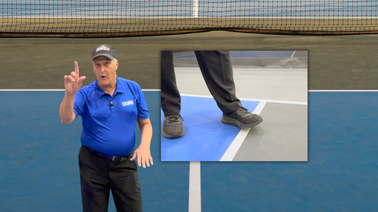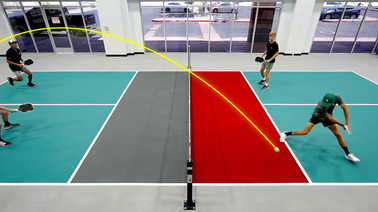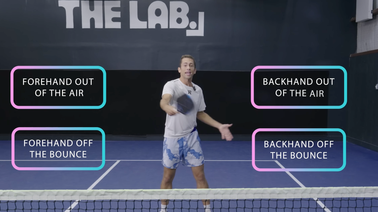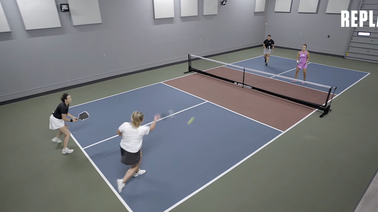
7 Pickleball Mistakes Keeping You From 5.0: Expert Fixes to Level Up Your Game
These aren't complicated technical adjustments that require months of practice. They're fundamental shifts in how you approach the game.
Over the past two years, Tanner Tomassi has given more than 1,000 pickleball lessons. He's seen every mistake in the book: the ones that keep players stuck at 3.5 and 4.0, the ones that feel impossible to shake, the ones that show up in matches when you need them least.
And honestly? Most of them are fixable.
In a recent video, Tanner breaks down the seven most common mistakes holding players back from reaching 5.0, offering practical fixes that go beyond the usual surface-level advice.
These aren't complicated technical adjustments that require months of practice. They're fundamental shifts in how you approach the game, from your mindset at the kitchen line to the way you move your feet.
1. Being Reactive Instead of Proactive at the Kitchen Line
Most players treat the kitchen line like a video game where they're just responding to whatever comes at them. The ball gets dinked back and forth, they're standing there watching it, and then, boom, it gets sped up and they're scrambling to react.
The fix? Paddle tracking. Wherever that ball is going, your paddle tip should be pointing at it. If you're dinking crosscourt, your paddle follows the ball's path. So when it gets sped up, you're already positioned to handle it. You're not caught reaching. You're ready.
The difference between being reactive and proactive at the kitchen line is the difference between winning and losing those crucial hands battles. It's about anticipation, not reaction time.
2. Approaching the Kitchen Line Upright After a 3rd Shot Drop
This one's subtle, but it changes everything. After you hit your third shot drop and you're moving forward to the kitchen line, amateur players tend to approach upright. Then when the ball gets hit at them, they jump down real quick to reset it.
The pros? They follow their drop shot in already low, in what Tanner calls a "crablike position." They're already prepared to reset the ball before it even gets to them.
"It makes such a difference already being low," Tanner says.
"You're never going to miss. Way more in control."
This is one of those adjustments that looks small on video but feels massive when you're actually playing. You're not scrambling. You're not late. You're just there, ready to go.
3. Hitting Too Hard in Hands Battles at the Kitchen Line
When players get into a hands battle at the kitchen line, their instinct is to rip the ball as hard as they can through their opponent's chest. It feels powerful. It feels like you're taking control.
But here's what actually happens: the ball either goes out or your opponent gets an easy shot right back at them.
The real move?
- Take a little speed off and angle the ball down toward your opponent's knees.
- Force them to hit up on the ball.
- That's when you get the pop-up and the easy putaway.
"I'm trying to hit that ball here as opposed to here, which gives me the next shot being here," Tanner demonstrates in the video, showing the difference between hitting at chest height versus hitting down to the feet.
It's counterintuitive, but softer hands often win hands battles. Control beats power at the kitchen line, every single time.
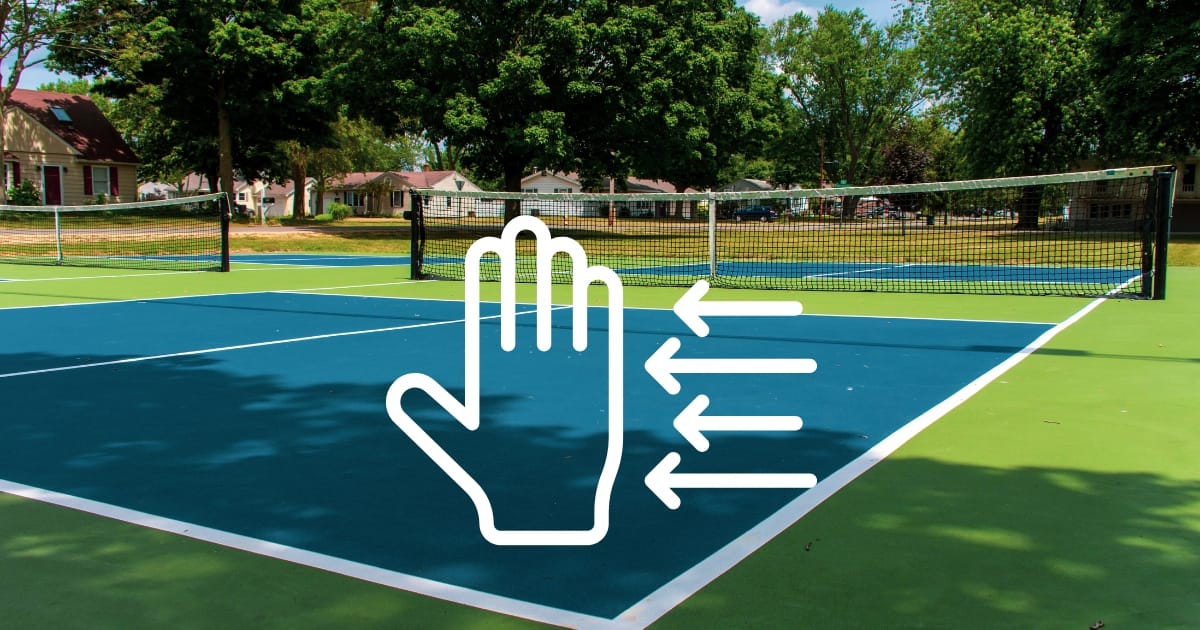
4. Sloppy or Lazy Footwork
Tanner calls this "the root cause of 99.99% of your problems," and he's not exaggerating. The most common thing he sees is players anchored down like cement feet in the middle of the court, looking to hit a reset. The ball gets hit to them and they're stuck lunging left, lunging right, completely off-balance.
You need to be physical and active with your body. When that ball's coming, you should be on your toes, using your knees, moving constantly. Watch Tanner dink at the kitchen line and you'll see his feet never stop moving. It's subtle, but it's constant.
Lazy footwork is the quickest way to lose control of the court. You can have perfect technique, but if your feet aren't moving, you're already behind.
Get the latest breaking news straight to your inbox by signing up for our free newsletter. Click here to subscribe.
5. Confusion About High vs. Low Ready Positions
This is where a lot of players get confused, and Tanner breaks it down into two scenarios.
- When you're both at the kitchen line: Keep a low ready position. Your paddle should be down low. Why? Because anything shoulder-high that you have to raise to is going out anyway. If you're already down low, you're only reacting to balls that are actually in play. A high ready position just means you're hitting more balls out.
- When your opponent is at the baseline and you're at the kitchen line: Now you want a high ready position where you're outstretched. You're trying to make the court feel smaller to your opponent. You're shrinking the space they have to work with. If you're back here, they have all the room in the world.
"I want to make the court feel smaller to him," Tanner explains. "So I do that by reaching in and shrinking the court."
It's the same position, but the context completely changes how you should set up.
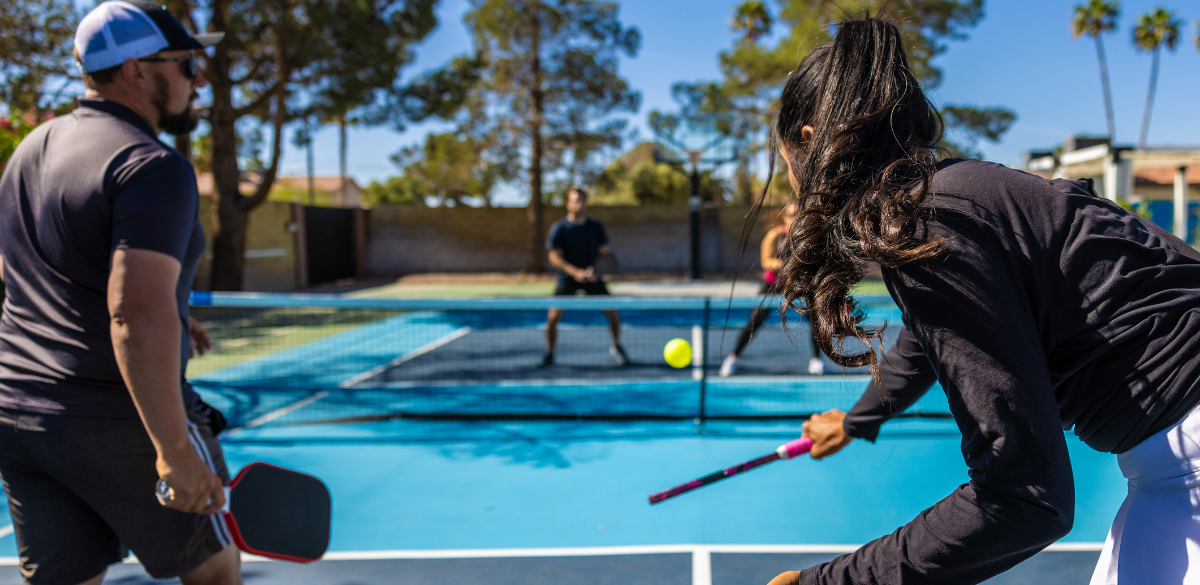
6. Driving Two Balls in a Row at the Baseline
Every player goes through a phase of learning this the hard way. When you're at the baseline, you never want to drive two balls in a row. If you drive the first ball, you should drop the next one.
Why? Because driving two in a row puts you in what Tanner calls a "washing machine cycle." You're not in control. Your opponent hits a missile at your feet and you're trying to drive it again. It's chaos.
Instead, use that first drive as an easier way to hit a reset from the kitchen line. It gives you so much more control and gets you up to the net in a position where you can actually finish the point.
This ties directly into mistake number two, by the way. You drive, you approach low, you're ready to finish.
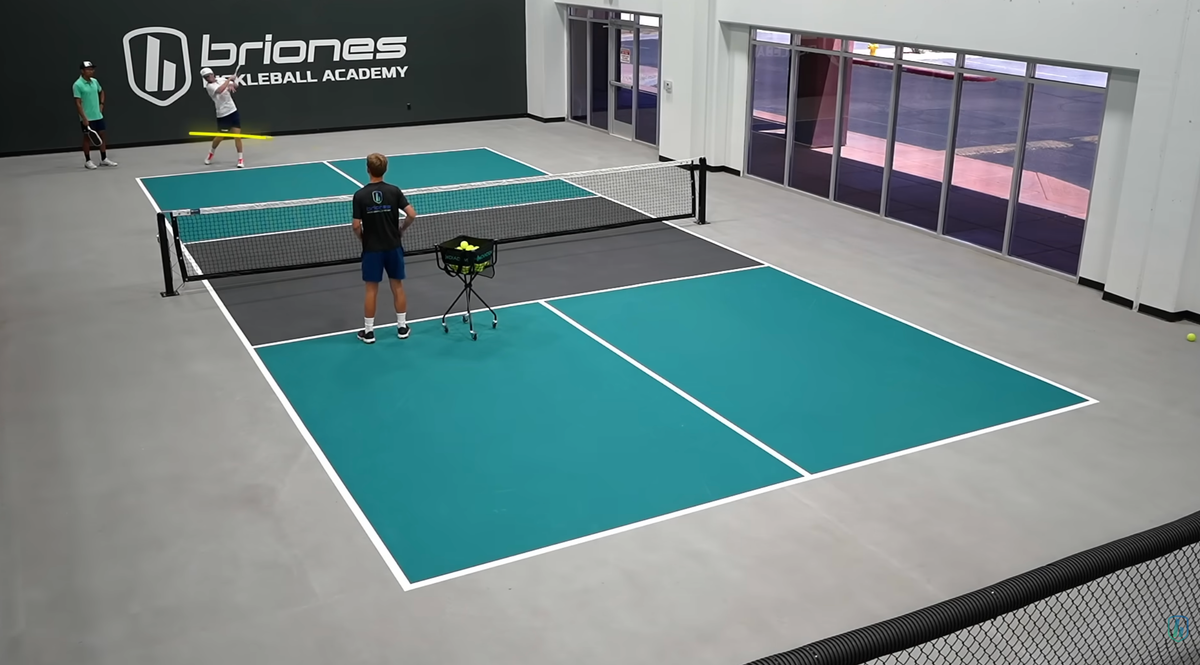
7. Poor Handling of Hard Drives Coming at You
When someone's hitting a hard drive at you, the instinct is to start with your paddle back and then reach out to produce power as the ball comes at you. But here's the problem: that ball is coming so fast that if your timing isn't perfect, it's going into the net or long.
The adjustment is simple but effective. When you know someone has a strong drive, right when they're about to hit it, move from a ready position to already being out in front. Now there's no timing involved. All you have to do is line up where it's coming.
"So much control," Tanner says, demonstrating the difference between the right way and the wrong way.
It's about positioning yourself before the ball even leaves their paddle, not trying to react after it does.
The Bigger Picture: From 3.5 to 5.0
What ties all seven of these mistakes together is that they're not about fancy shots or advanced techniques. They're about fundamentals. They're about how you think about the game, how you position yourself, and how you move.
Tanner's approach to coaching is refreshingly straightforward. He's not trying to teach you something complicated. He's trying to save you from learning these lessons the hard way, the way most players do. He's been there. He's seen it. And he's distilled it down to seven things that, if you fix them, will genuinely move your game forward.
Hundreds of thousands of pickleballers read The Dink Newsletter, including pros, business owners, beginners & (probably) your grandma. Click here to subscribe, it's free.
The path from 3.5 to 5.0 isn't about one magical technique. It's about eliminating the mistakes that are holding you back. It's about being proactive instead of reactive. It's about moving your feet. It's about understanding when to be aggressive and when to be patient.

Love Pickleball? Join 100k+ readers for free weekly tips, news & gear deals.
Subscribe to The DinkGet 15% off pickleball gear at Midwest Raquet Sports





